
Disclaimer: This article is for educational purposes only. We do not support and condemn any cybercrime. We hope this article will help you better organize your security on the Internet, forewarned is forearmed.
In recent years, a huge number of pentester devices have appeared in the clearnet and new ones are constantly appearing. Most are sold in scattered stores throughout (including on aliexpress), and pentesters have a new headache - to choose the right one among dozens of similar devices or to look for another "universal" solution. Finally, cool specialist and information security consultant Yago Hansen just put together a catalog of cool devices, hardware and accessories that have proven their effectiveness. Now the catalog is of the second version, it contains 177 items from 8 categories. We bring to your attention its adaptation in the form of a cycle of 7 posts (some categories will be combined or divided into two articles due to the difference in volume).
What will happen in the loop:
- Mini computers
- RF
- Wi-Fi + Network
- RFID & NFC + HID & Keylog
- Bus
- Accessories 1/2
- Accessories 2/2
Mini computers
▍1. GPD micro PC

Seven-inch portable laptop
A compact computer, ideal for working with hacker software and supporting all kinds of external hacking devices. The previous version supported Kali Linux. This one should too, as it supports Ubuntu Mate.
Specifications
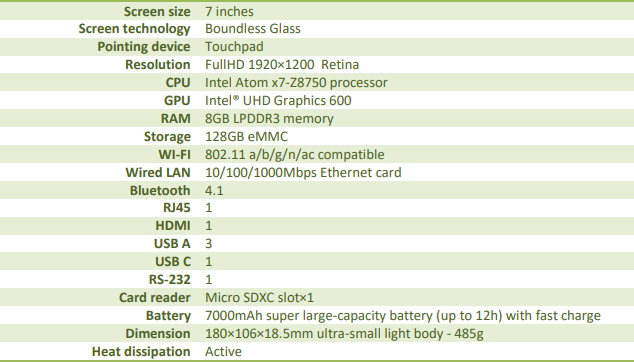

Price - 314 euros (crowdfunding)
▍2. GPD Pocket
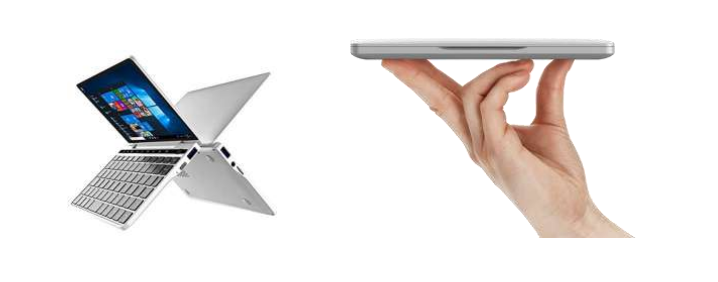
Seven-inch portable laptop
A compact computer, ideal for working with hacker software and supporting all kinds of external hacking devices. This version supports Kali Linux.
Specifications
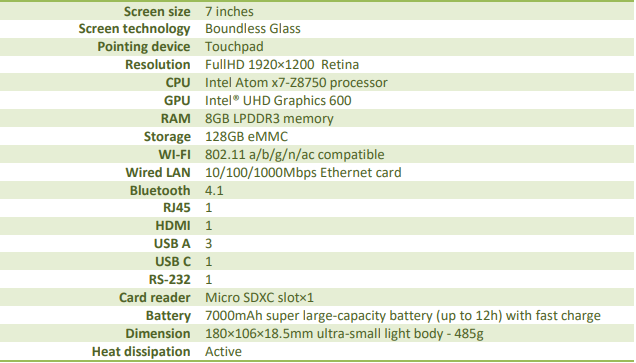

Price - 600 euros (crowdfunding)
▍3. Raspberry Pi Zero W
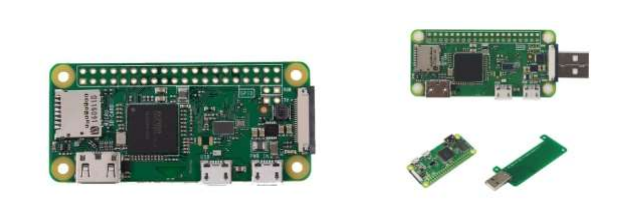
Linux single board for a variety of attack vectors
Compact single board computer, ideal for working with hacker software and supporting all kinds of external hacking devices. The most famous distributions for it are P4wnP1 ALOA and Kali Linux. P4wnP1 is a deeply customizable platform for USB attacks on Raspberry Pi Zero or Raspberry Pi Zero W. P4wnP1 is succeeded by P4wnP1 ALOA and is hosted here: https://github.com/mame82/P4wnP1_aloa
Supported USB features:
- USB Ethernet (RNDIS and CDC ECM)
- USB Serial
- USB storage (flash drive or CD-ROM)
- HID keyboard
- HID mouse
The device also offers many attacks related to Wi-Fi, Bluetooth and networks.
Specifications


Price - from 17 euros on Aliexpress
▍4. Raspberry Pi 3 model B +
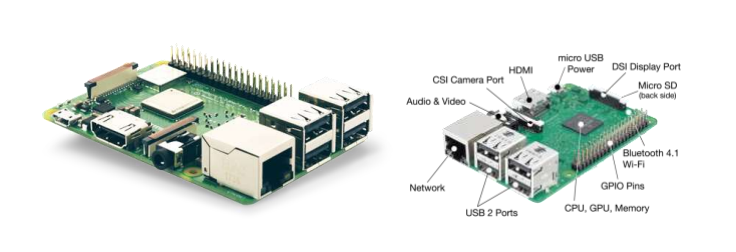
A Linux single board for a variety of attack vectors
The Raspberry Pi has a lot of fans, which means a good level of support for a beginner. In addition to security experts and hackers running Kali Linux on it, many developers use the Pi in scientific and industrial projects. Although the Pi was originally conceived to introduce students to programming, today the Raspberry Pi is capable of truly amazing things with the right accessories and creative thinking. For example, the Raspberry Pi was used as the basis for a prototype cyber weapon in the form of a drone performing a massive deauth attack.
Specifications


Price - from € 30 on Amazon
▍5. Raspberry Pi 3 model A +
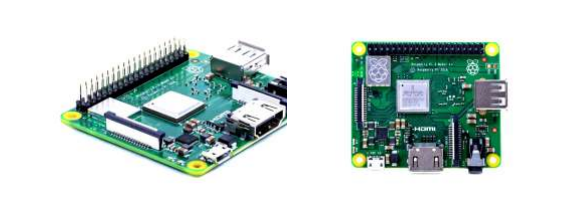
Little Known Raspi Single Board
The Raspberry Pi 3 model A + uses the same base as the Raspberry Pi 1 Model A +, but both are not well known. This small model has a form factor that is very different from the Raspberry Pi model B +, and perhaps this is the only reason to buy it instead of the big brother. For some projects, size can be critical, but in most cases the B + is worth picking as it offers twice the memory, Ethernet, and three additional USB ports.
Specifications
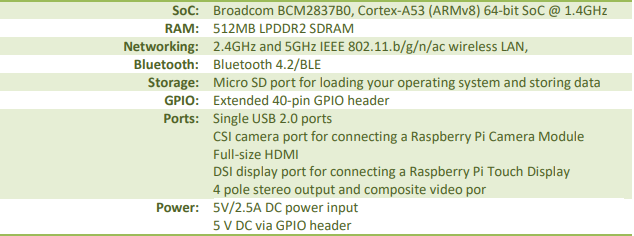

Price - from 29 euros on Amazon
▍6. Raspberry Pi 4 model B +

New Raspi Version In
terms of speed and performance, the new Raspberry Pi 4 is one step ahead of its younger brothers. For the first time, a real desktop experience is available on the Pi - whether it's editing documents, spreadsheets, or presentations, or using a browser with tons of open tabs - only quieter and cheaper. The energy efficient, passively cooled Pi 4 comes with a gigabit port along with Wi-Fi and Bluetooth, two USB 2.0 and two 3.0, and comes in a choice of 1, 2 or 4 gigabytes of storage.
Specifications
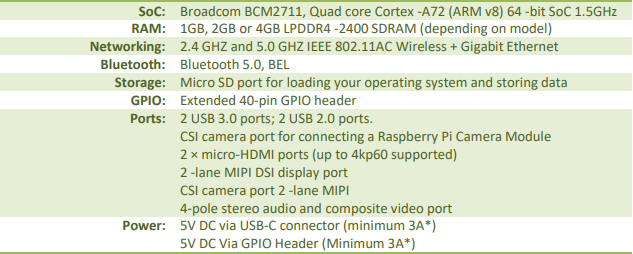

Price - from 51 euros on Aliexpress
▍7. ODROID XU4
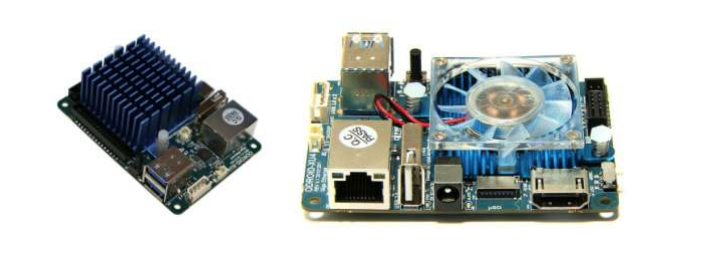
Charged Raspberry Pi
In some cases, the Pi is not enough for certain hacking projects, more CPU / GPU / memory or a USB 3 connection is required. For such projects, the ODROID XU4 is perfect. Raspberry Pi 3 is cheaper and better supported, but GSM / 4G LTE hacking usually requires cool SDRs like BladeRF or USRP with USB 3. Also, in projects using rainbow tables, you will need a high speed memory bus like EMMC or SATA. Both active (XU4) and passive (XU4Q) cooling can be used on this board. Supports Linux and Android.
Specifications


Price - from 79 euros on odroid.co
▍8. RockPro64

High-performance Linux-based board
RockPro64 is the most powerful single board from PINE64 with six-core SOC Rockchip RK3399 and quad-core GPU Mali-T860MP4 and quad-channel LPDDR4 memory. In addition, there are USB 3.0, USB Type-C with DP1.2, PCIe x4, and eMMC. Plus a 40-pin header with I2C, SPI, UARTs and GPIOs. The board is backward compatible with old PINE64 peripherals including Wi-Fi / BT module, camera and LCD panel, but a selection of new peripherals is also available. All this fits into the standard "A" dimensions of the original PINE A64. The only drawback is that this model is significantly larger than the Raspberry Pi. The ROCKPro64 4GB version is declared LTS, meaning the support period is at least 5 years.
Specifications


Price from 59 euros on pine64.org
▍9. Coral USB Accelerator

Powerful Machine Learning for Linux
Coral USB Accelerator adds the power of machine learning under all existing Linux distributions. It uses Edge TPU, a small ASIC from Google that allows powerful computing with low power consumption via USB 3.0. For example, it can reproduce advanced mobile vision models such as MobileNet v2 at 100+ FPS. Models are developed on the TensorFlow Lite framework and then compiled under the USB Accelerator.
Specifications


Price - from 75 euros at seeedstudio.com
▍10. nVidia Jetson Nano HDK
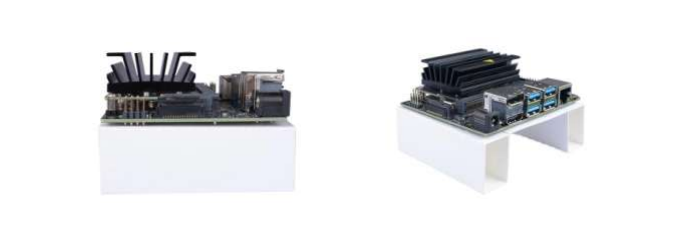
The small form factor development of the
nVidia Jetson Nano Developer Kit brings AI computing power to unprecedented levels of size, power, and cost. The Jetson Nano provides 472 Gigaflops for the fast performance of advanced artificial intelligence algorithms. With the ability to run multiple neural networks in parallel and process multiple high-precision sensors at the same time, the platform is an ideal solution for applications such as entry-level DVRs, home robots and intelligent gateways with analytical capabilities.
Specifications


Price - from 99 euros at seeedstudio.com
▍11. Hummingboard pro

Small Linux Multitool
You'll love the Hummingboard family of single-board computers - small but powerful, low-cost ARM computers. Ideal for IoT due to wide range of compatible peripherals and different storage methods.
Specifications


Price from 97 euros on solid-run.com
▍12. Cubox-i2ex
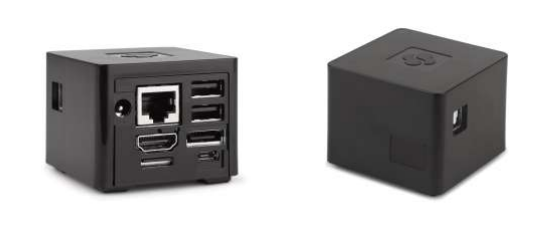
Linux-multitool
Cubox-i is developed on the SOM (System on a module) principle using high quality materials according to industry standards. Passive cooling, long service life.
Specifications
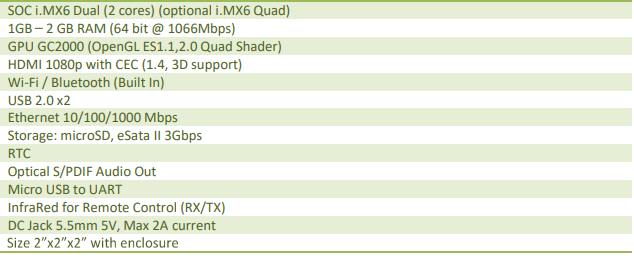

Price - from 80 euros on solid-run.com
▍13. NanoPi NEO 2

Another
NanoPi NEO 2 hacker board is a recent release from FriendlyElec. It uses an Allwinner 64-bit quad-core H5 SoC (ARM Cortex-A53), a six-core Mail450 GPU and 512M DDR3 RAM. There are ready-made images of UbuntuCore and Armbian. The model inherits the dimensions of the original NEO and is compatible with hardware for it.
Specifications


Price - from 20 euros at friendlyarm.com
▍15. NanoPi NEO Plus2

NanoPi on Steoids
NanoPi NEO Plus2 is another single board from FriendlyElec on Allwinner, with 64-bit quad-core A53 SoC, six-core Mali450 GPU and 1GB DDR3 RAM / 8GB eMMC. With a size of only 40 * 52 mm, the model is equipped with Wi-Fi / BT module, Gigabit Ethernet and two USB hosts. Supports booting from MicroSD, improved heat dissipation compared to the younger version.
Specifications


Price - from 45 euros on Aliexpress
▍16. NanoPi R1
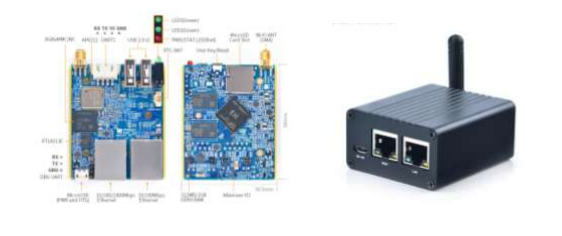
NanoPi with two Ethernet ports
This Linux single board comes with 10/100 and 10/100/1000 Mbps Ethernet ports, Wi-Fi and Bluetooth. It has good networking performance, allowing it to be used as a platform for a variety of networking solutions. Inside it has an Allwinner H3 SoC with a quad-core Arm Cortex-A7, up to 1Gb DDR3 RAM, and optional 8Gb eMMC.
Don't forget to get a UART-USB adapter.
Specifications
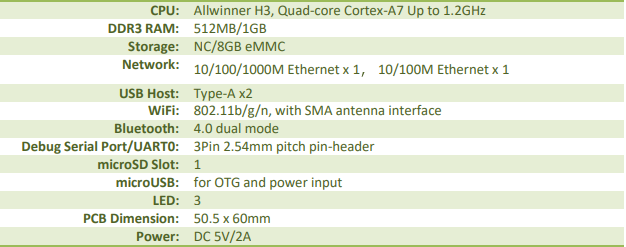

Price - from 40 euros on Aliexpress
▍17. Wi-Fi Pineapple Wireless
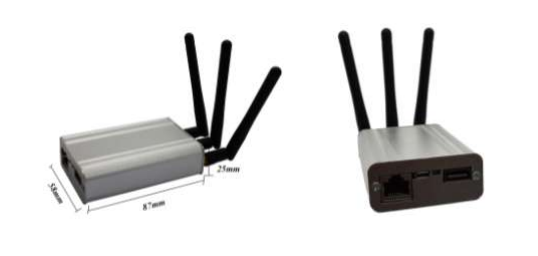
Another Pineapple
Wi-Fi Clone Pineapple - the original of this device - was developed in Hak5 as a specialized tool for attacking Wi-Fi networks. Hak5 sells three varieties of it, and they all cost decent money. This Chinese clone is pretty good, matches the characteristics of the Pineapple Nano, and claims to be compatible with the original Pineapple hardware.
Specifications


Price - from 53 euros on Aliexpress
▍18. Orange pi zero

Another single-board multitool
This model is completely open source, can run Android 4.4, Ubuntu and Debian. Uses AllWinner H2 SoC, has 256MB / 512MB DDR3 SDRAM. Since this solution is very cheap, problems with it arise only in weak support and community, so most of the problems will have to be solved on your own.
Specifications
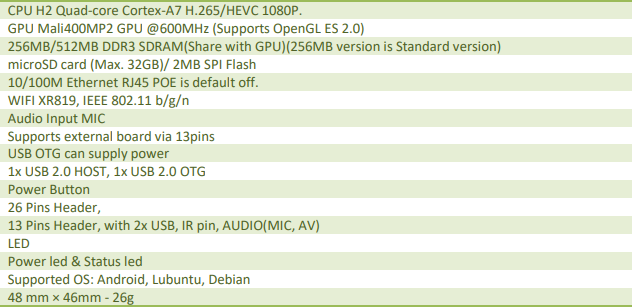

Price - from 10 euros on Aliexpress
▍19. NanoPi Duo2
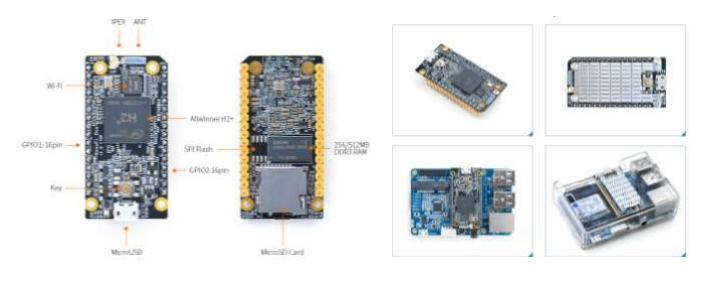
A tiny motherboard for IoT
Another ARM-board from FriendlyELEC. Dimensions - 55 x 25.4mm, runs on a quad-core Allwinner A7 H3, has 256M / 512M DDR3 RAM, Wi-Fi / BT module and an OV5640 camera connector. Works with various Linux distributions such as UbubtuCore. Powered by a MicroUSB port and can be loaded from MicroSD. There are standard connectors: USB, SPI, UART, I2C, PWM, IR, audio input and output, Ethernet.
Specifications
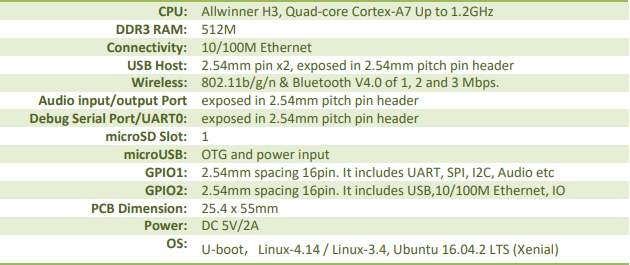

Price - from 20 euros at friendlyarm.com
▍20. Arduino MKR boards

Arduino IoT Boards The
Arduino is renowned for its ease of use and low cost to develop. Their relatively recent MKR series is particularly well suited for IoT due to its wide range of connectivity options. Supports Wi-Fi, LoRa, Sigfox, and GSM Cellular. There are add-on cards that support Ethernet, NB-IoT, and Cat M1 Cellular.
Specifications
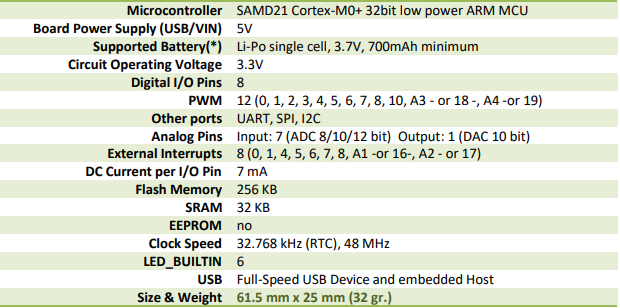

Price - from 20 euros on store.arduino.cc
▍21. Pycom FiPy

Python Programmable ESP32 Board
Imagine 5 networks within a single ideally shaped board the same size as WiPy, LoPy, and SiPy. MicroPython is included, Wi-Fi, Bluetooth, LoRa, Sigfox and dual LTE-M (Cat M1 and NBIoT) are supported, giving FiPy access to all LPWAN networks on one tiny board.
Specifications
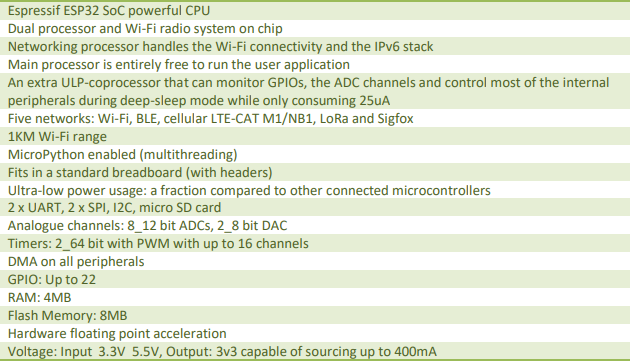

Price - from 52 euros on pycom.io
Next section - RF, wait for next week.
